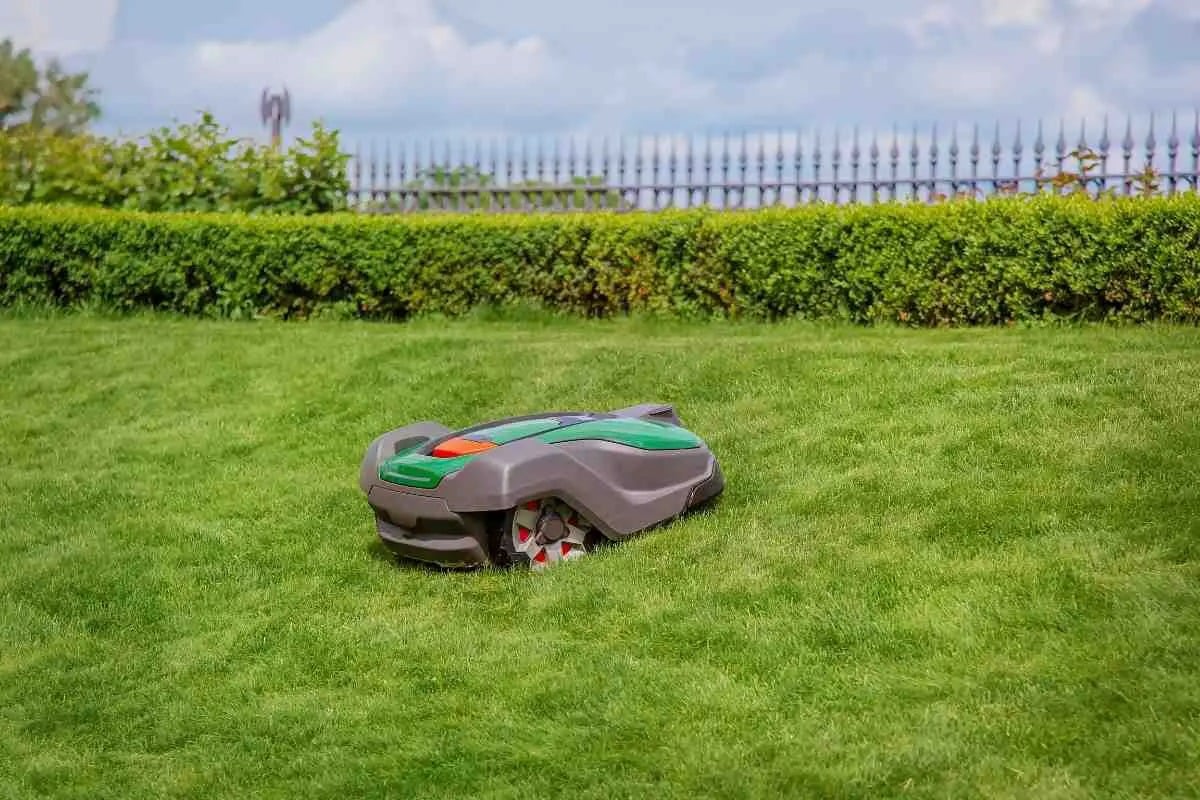Using a robotic lawnmower on slopes can be challenging. However, with the right preparations, the device works effectively on hilly terrain
Robot lawn mower: What to consider on slopes
For a robotic lawnmower to do its job on a slope, it must be able to cope with the gradient. Especially on slopes, the condition of the ground is crucial for the traction of the device. Damp ground can lead to a lack of grip. The wheels then spin more quickly or the machine starts to slip. The robotic lawnmower should therefore only be used on slopes when the weather is suitable. The steeper the slope, the more important this is.
- Slopes and slopes are by no means child’s play for robotic lawnmowers. The device requires significantly more power. In the long term, the motor is put under a lot of strain, which shortens the service life of the device if it is incorrectly proportioned.
- Motor power, grip and tilt sensors are essential for robotic lawnmowers that are to be used on slopes. To ensure that self-sufficient mowing on slopes is successful, be sure to study the manufacturer’s instructions before purchasing the device
- In it you will find information about the slope the robot can manage and whether the model is operated with sensors or with a perimeter wire. Many modern robotic lawn mowers are also equipped with tilt sensors. They prevent the robot from tipping over on terrain that is too steep.
- There are programmable robotic lawnmowers that follow a specific mowing pattern or certain directions of travel. Such functions can be very helpful on steep terrain, as the device follows a predetermined route.
- In addition, the robotic lawnmower should not work on slopes for too long to avoid overheating or excessive wear. It should therefore be possible to adjust the mowing times
- Some manufacturers offer special accessories such as spikes or additional weights. This can improve traction on steep slopes.
- If necessary, it can help to adapt the terrain. Changes to the terrain, for example by terracing or smoothing particularly steep areas, can lead to better efficiency of the robotic lawnmower on slopes.
Finding, using and maintaining robotic lawnmowers on slopes
Your robotic lawnmower should be able to master your slope and have large, non-slip drive wheels. To ensure the safe operation of your robotic lawnmower, lay the boundary wire carefully and adjust the mowing times and direction of travel to the terrain. Don’t forget to maintain your device regularly. This includes cleaning the wheels and sensors and sharpening the blades. Removing leaves or other obstacles on slopes also contributes to the safe and long-lasting use of your robotic lawnmower.
- Before you buy a robotic lawnmower, be sure to check the slope capability. Many models are designed for slopes of up to 25 to 45 %, and some special models can even tackle steeper slopes
- To calculate the slope, you need two pieces of information: the length of the sloping surface and the difference in height between the highest and lowest points of this surface. Divide the difference in height by the length of the surface and then multiply the result by 100.
- Select a section of your slope that is long enough to take precise measurements. Place the ruler or tape measure at the bottom of this section and run it straight up until it reaches the highest point. Note the measured vertical height in centimeters.
- Before you can calculate the slope, you must first measure the horizontal distance from the point at which you placed the ruler to the top of the section. Also record this information in centimeters
- To calculate the slope, use this formula: Inclination (%) = (vertical height / horizontal distance) * 100. If the vertical height is 25 cm and the horizontal distance is 100 cm, this results in an inclination of 25 %. This value is important for the motor power that your robotic lawnmower must be equipped with.
- Now select the required drive wheels depending on the incline. Models with large and grippy drive wheels generally have better traction on steep slopes. There are also models with spikes or special profiles to improve traction. Devices with four wheels instead of three are also recommended so that the robot does not get into an inclined position on the slope.
- Robot lawn mowers for slopes work in a similar way to conventional self-propelled lawn mowers. To use them, first mark the area to be mowed with a perimeter wire. Alternatively, you can set up the working area using integrated sensors. To enable your robot to turn on a slope, it needs a level run-off zone with a maximum gradient of 15%.
- Leaves can impair the robotic lawnmower’s grip on the ground. It is therefore particularly important in the fall to regularly remove leaves from the lawn. The devices also have difficulties with grass that is too wet.
- Regular care and maintenance will extend the service life of your robotic lawnmower. A well-maintained device works more efficiently, especially on slopes, and can cut the specified mowing area faster and more thoroughly. Therefore, keep the wheels and sensors of the robotic lawnmower clean to ensure optimum traction and functionality. Sharp blades are particularly important so that the machine can be efficient even on sloping terrain.
